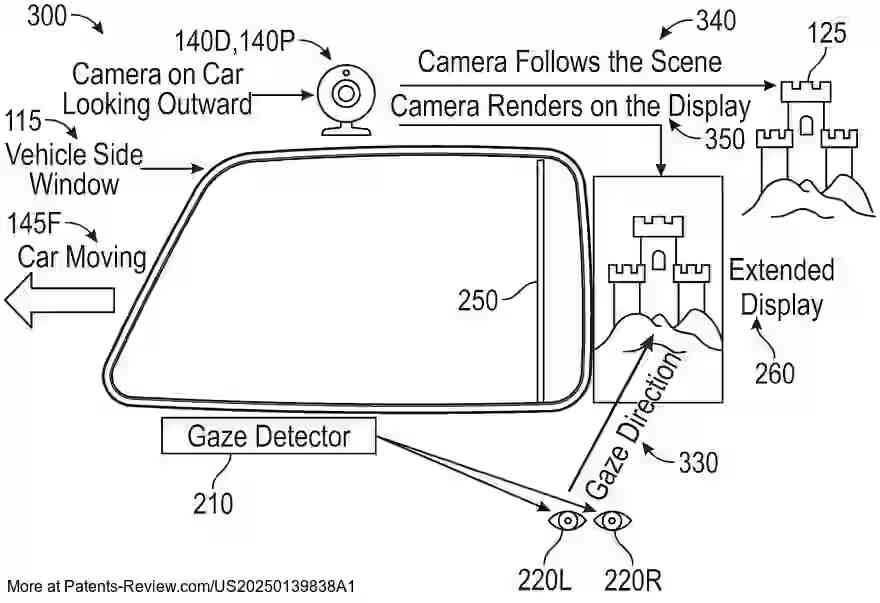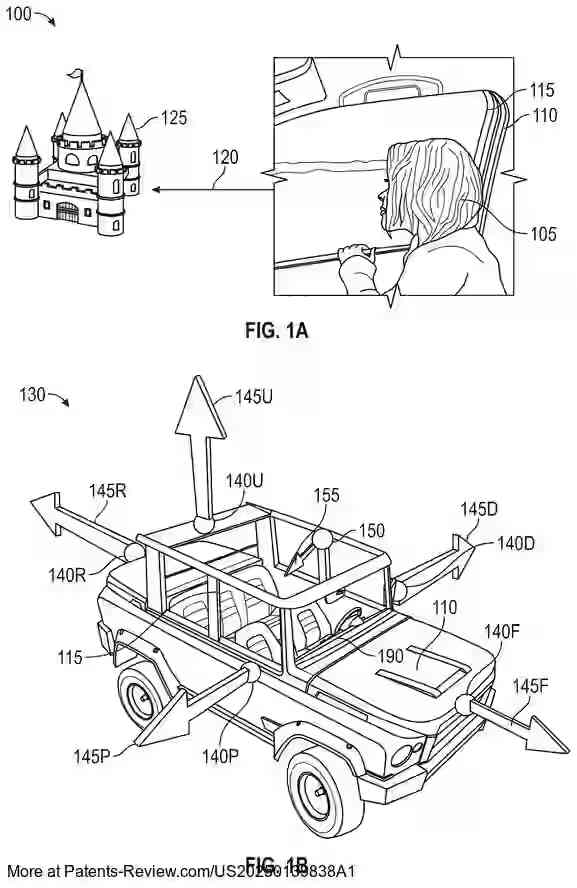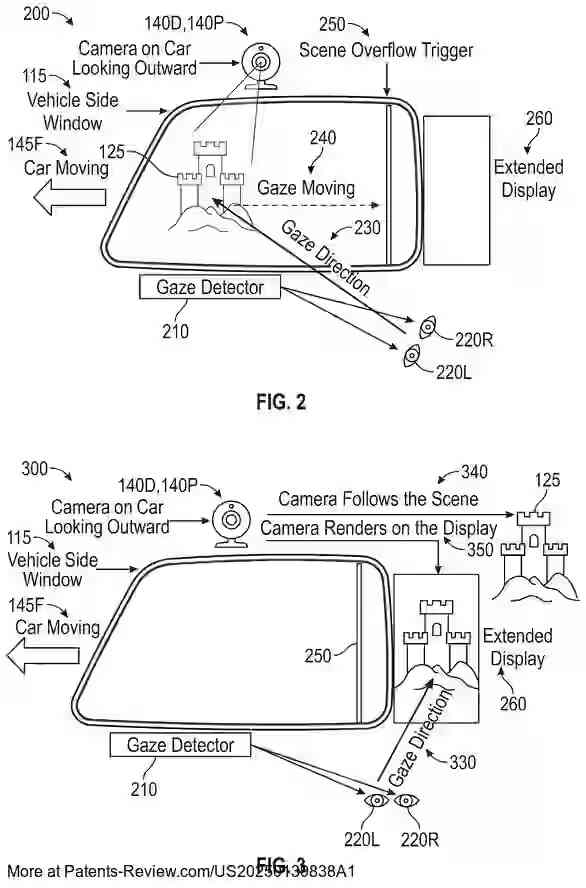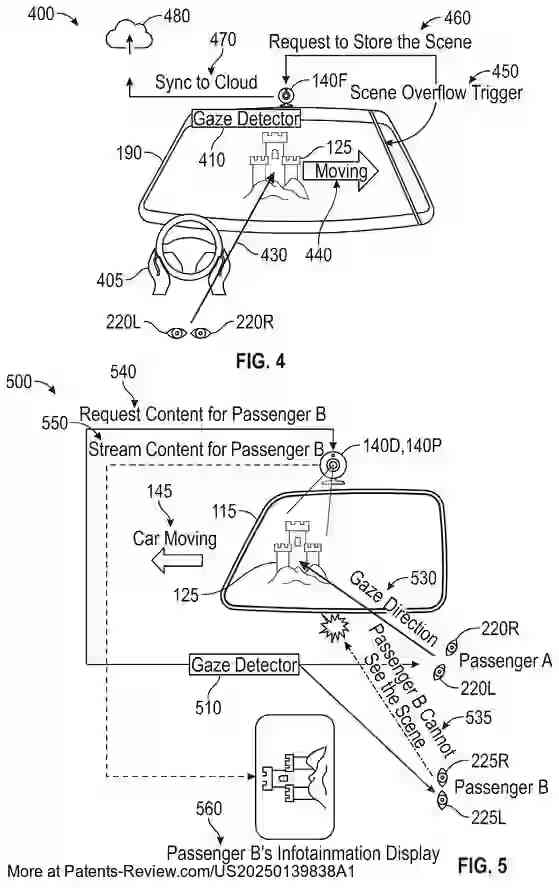CAPTURING AND PROCESSING CONTENT FOR IN-VEHICLE AND EXTENDED DISPLAY, CURATED JOURNALING, AND REAL-TIME ASSISTANCE DURING VEHICULAR TRAVEL
US20250139838
2025-05-01
Physics
G06T11/00
Inventors:
Applicant:
Drawings (4 of 26)




Smart overview of the Invention
The patent application describes innovative methods and systems for capturing and processing visual content during vehicular travel. It focuses on enhancing the experience for passengers and drivers by utilizing cameras to capture scenes and objects that quickly pass out of view. The technology extends the field of view beyond what is immediately visible, allowing for the capture of specific types of objects or scenes, such as billboards and road signs. This captured content is then processed to generate curated media, which can be utilized in extended reality environments and enhanced with artificial intelligence for improved imaging and content generation.
Technological Approaches
Various approaches are compared to highlight the limitations of existing technologies. Current methods include using gaze or gestures to trigger camera captures, flexible OLED displays to eliminate blind spots, smart glass for video displays, and digital billboards for dynamic advertising. These methods have limitations such as static location, lack of targeting capabilities, or being restricted to simplistic video capture. The disclosed system aims to overcome these limitations by providing a seamless recording experience without requiring active operation by passengers or drivers, thus allowing them to enjoy their surroundings more fully.
Key Features
The system employs eye-tracking technology to determine user interest in objects or scenes. It identifies objects based on gaze direction, duration, and speed, as well as user preferences and trained models. This allows for the determination of interest in specific objects, such as roadside billboards or other physical conveyances of information. The system compensates for vehicle movement and continues capturing scenes even after they move out of immediate view. This ensures that desirable media content items are generated for later enjoyment or display.
Display and Interaction
Captured content can be displayed on various in-vehicle devices such as rear-view mirrors, head-up displays (HUDs), infotainment systems, or portable devices like smartphones. The system can overlay images with additional content, such as expanded advertisements, which are configurable in terms of size and orientation. Interactive elements such as user-selectable icons can trigger further actions like providing turn-by-turn directions via a mapping application. Content can also be cast to remote displays for sharing with others outside the vehicle.
Applications and Benefits
The system supports mobile and automotive implementations, offering enhanced driver assistance by displaying important information that may have passed out of view. It enables the generation of curated journals from road trips for later enjoyment by drivers and passengers. The technology also facilitates extended reality applications by providing immersive experiences based on captured content. Overall, this system enhances the travel experience by allowing users to focus on enjoying their journey while still capturing valuable visual content.